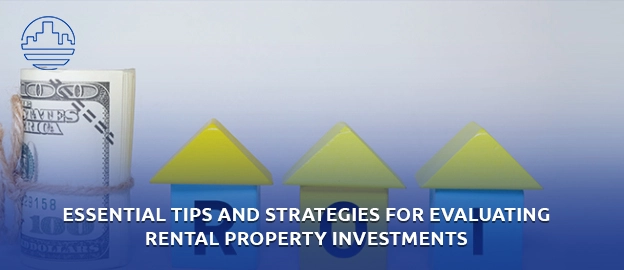
Investing in rental property can be a lucrative opportunity to generate passive income and secure long-term wealth. Nevertheless, it is crucial to approach this investment with a careful evaluation to make informed decisions. Diving into the rental property without proper analysis can lead to financial loss and missed opportunities like any other investment.
Steps to Evaluate Rental Property Investments
How do you evaluate a rental property investment if you are a property investor? We’ve jotted down the essential steps for evaluating rental property investments, so you can make informed decisions and maximize your ROI.
1. Conduct a Market Analysis
Before purchasing a rental property, it is crucial to conduct a market analysis to determine whether it is a sound investment. Start by researching the property’s location and analyzing data such as vacancy rates, rental prices, and population trends. This information will help you identify the demand for rental properties in the area and determine whether the rental market is strong. Additionally, understanding the economic and demographic trends of the area is essential, as this can impact the demand for rental properties in the future.
2. Analyze the Property Itself
After conducting a market analysis, it is time to evaluate the rental property. Start by assessing the property’s physical condition, including the building’s age, necessary repairs, and renovations. Next, calculate the potential cash flow by estimating the rental income and subtracting expenses such as property taxes, insurance, and maintenance costs. Evaluating the potential for appreciation is also important, as this can impact the property’s long-term value.
3. Evaluate Financing Options
Understanding the financing options available is crucial in evaluating a rental property investment. Calculate the debt service coverage ratio to measure the property’s ability to generate enough income to cover its debt payments. Evaluate the cash-on-cash return, which measures the property’s annual cash flow compared to the initial investment. Carefully consider financing options and ensure the investment is financially feasible.
4. Analyze the Management of the Property
Analyzing the current management of the rental property is important, as this can impact the investment’s potential for success. Evaluate the responsibilities and costs of managing the property and identify opportunities for improving management efficiency. This can increase the property’s profitability and reduce management costs.
5. Identify Potential Risks
Identifying risks associated with the investment is important in evaluating a rental property investment. Analyze risks such as economic downturns, changes in zoning laws, or changes in demand for rental properties. Evaluate the potential impact of each risk and develop a risk mitigation strategy to minimize risk and maximize the investment’s potential for success.
Evaluating a rental property investment is critical in making a sound financial decision. You can increase your chances of success and maximize your ROI by conducting a comprehensive analysis of the market, property, financing, management, and potential risks. Remember, investing in rental properties can be a lucrative opportunity for generating passive income and building long-term wealth, but it is essential to approach it with caution and diligence. Following the essential steps outlined in this article and seeking guidance from experienced professionals like Beach Front Property Management, you can become a successful rental property investor and achieve your financial goals.
Evaluate Rental Properties With BFPM To Maximize ROI
Beachfront property management company profoundly understands the local rental market and can provide valuable insights into rental prices, demand, and competition. They can help evaluate the property, assessing its potential for rental income and identifying necessary repairs or upgrades. Additionally, property management companies can assist with the day-to-day management of the rental property, reducing the workload and stress on the property owner. They can handle tasks such as marketing the property, screening potential tenants, collecting rent, and handling maintenance and repairs, which can increase the property’s profitability and reduce management costs.
Learn more about how we can help. Customized solutions for large portfolios!
